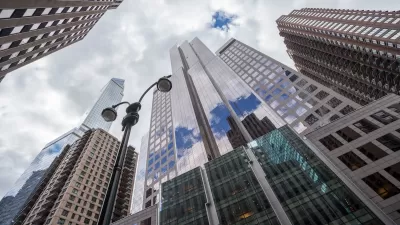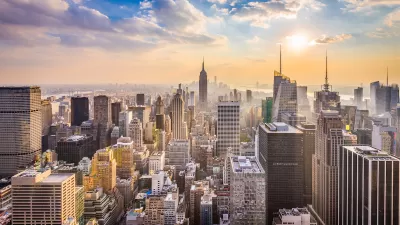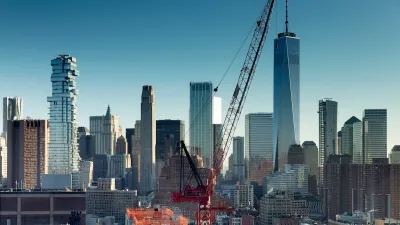Zoning changes in Brooklyn, the Bronx, and Midtown Manhattan would allow residential construction in areas previously zoned for light manufacturing.

New York City Mayor Eric Adams announced a plan to rezone part of Brooklyn’s Atlantic Avenue from light manufacturing to residential, which could allow for the creation of 4,000 new housing units, 1,550 of which would be affordable.
Jack Rogers reports on the story in Globe St., writing that “The plan envisions a high-density mix of housing and ground-floor commercial space along Atlantic Avenue. For the mid-blocks south of Atlantic Avenue between Grand and Franklin avenues, and north of Atlantic along Herkimer Place, the city is planning to introduce a special incentive to promote mixed-use development.”
Other rezoning proposals from Adams and the city would create up to 20,000 new housing units in Midtown and 6,000 units in the Bronx. “In his second State of the City address at the beginning of the year, Adams also proposed to rezone an area on Staten Island’s North Shore to permit expanded mixed-use development and improved waterfront access.”
Mayor Adams’ ‘City of Yes’ zoning reform plan, announced earlier this year, focuses on reducing barriers for small businesses in the city.
FULL STORY: NYC Plans to Rezone Atlantic Avenue to Allow 4,000 New Homes

Alabama: Trump Terminates Settlements for Black Communities Harmed By Raw Sewage
Trump deemed the landmark civil rights agreement “illegal DEI and environmental justice policy.”

Planetizen Federal Action Tracker
A weekly monitor of how Trump’s orders and actions are impacting planners and planning in America.

The 120 Year Old Tiny Home Villages That Sheltered San Francisco’s Earthquake Refugees
More than a century ago, San Francisco mobilized to house thousands of residents displaced by the 1906 earthquake. Could their strategy offer a model for the present?

LA’s Tree Emergency Goes Beyond Vandalism
After a vandal destroyed dozens of downtown LA trees, Mayor Karen Bass vowed to replace them. Days later, she slashed the city’s tree budget.

Sacramento Leads Nation With Bus-Mounted Bike Lane Enforcement Cameras
The city is the first to use its bus-mounted traffic enforcement system to cite drivers who park or drive in bike lanes.

Seattle Voters Approve Social Housing Referendum
Voters approved a corporate tax to fund the city’s housing authority despite an opposition campaign funded by Amazon and Microsoft.
Urban Design for Planners 1: Software Tools
This six-course series explores essential urban design concepts using open source software and equips planners with the tools they need to participate fully in the urban design process.
Planning for Universal Design
Learn the tools for implementing Universal Design in planning regulations.
Ada County Highway District
Clanton & Associates, Inc.
Jessamine County Fiscal Court
Institute for Housing and Urban Development Studies (IHS)
City of Grandview
Harvard GSD Executive Education
Toledo-Lucas County Plan Commissions
Salt Lake City
NYU Wagner Graduate School of Public Service





























